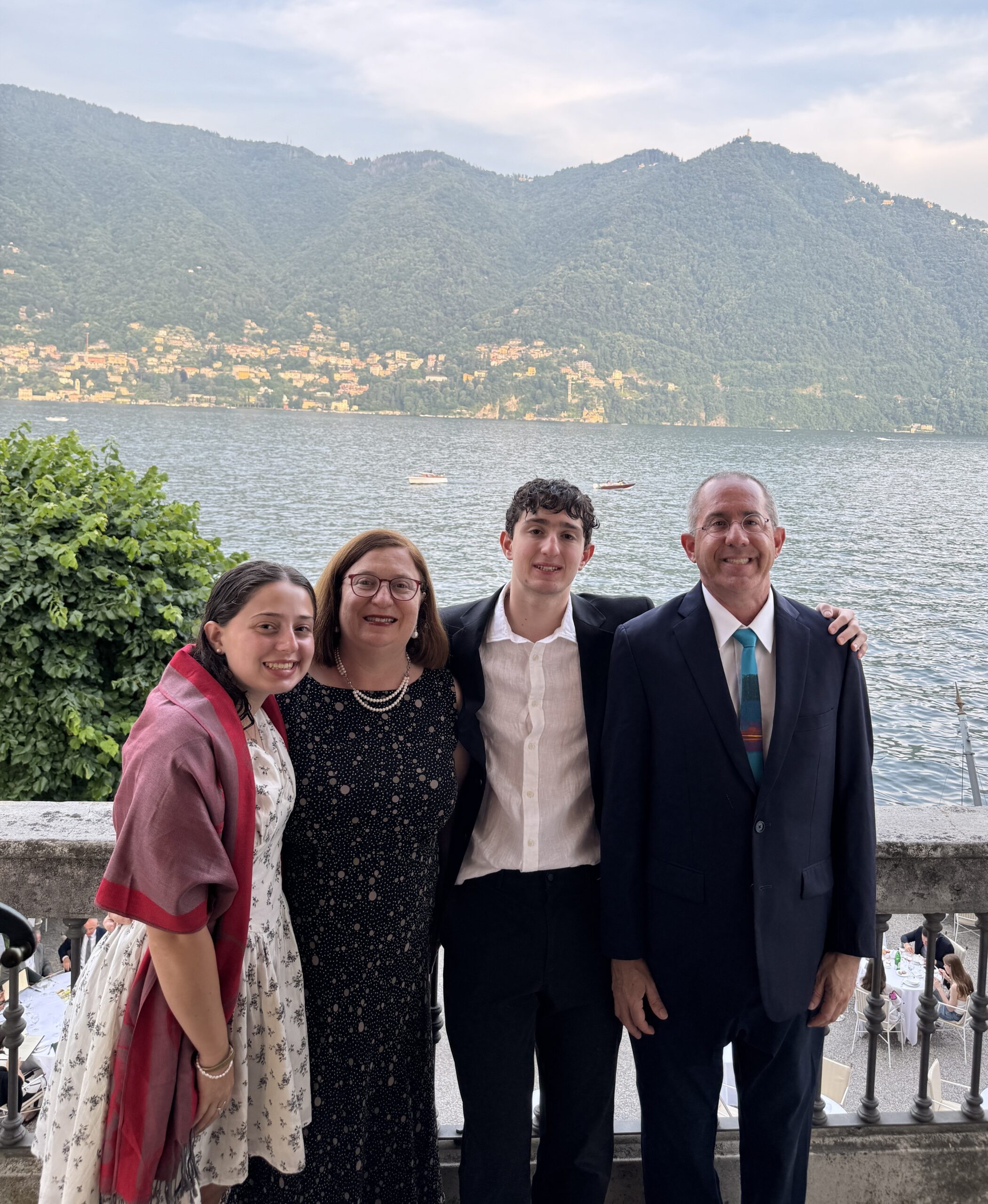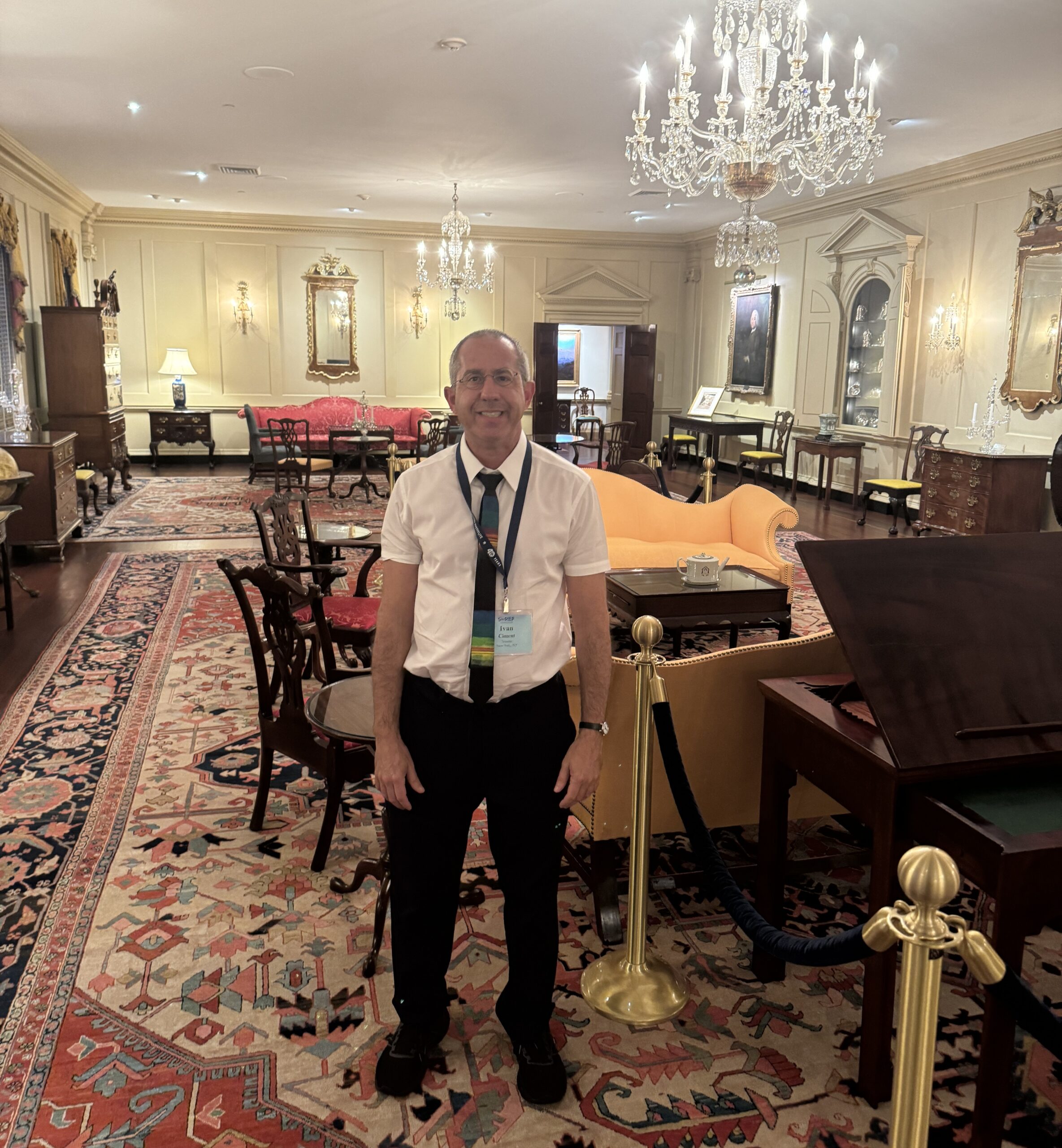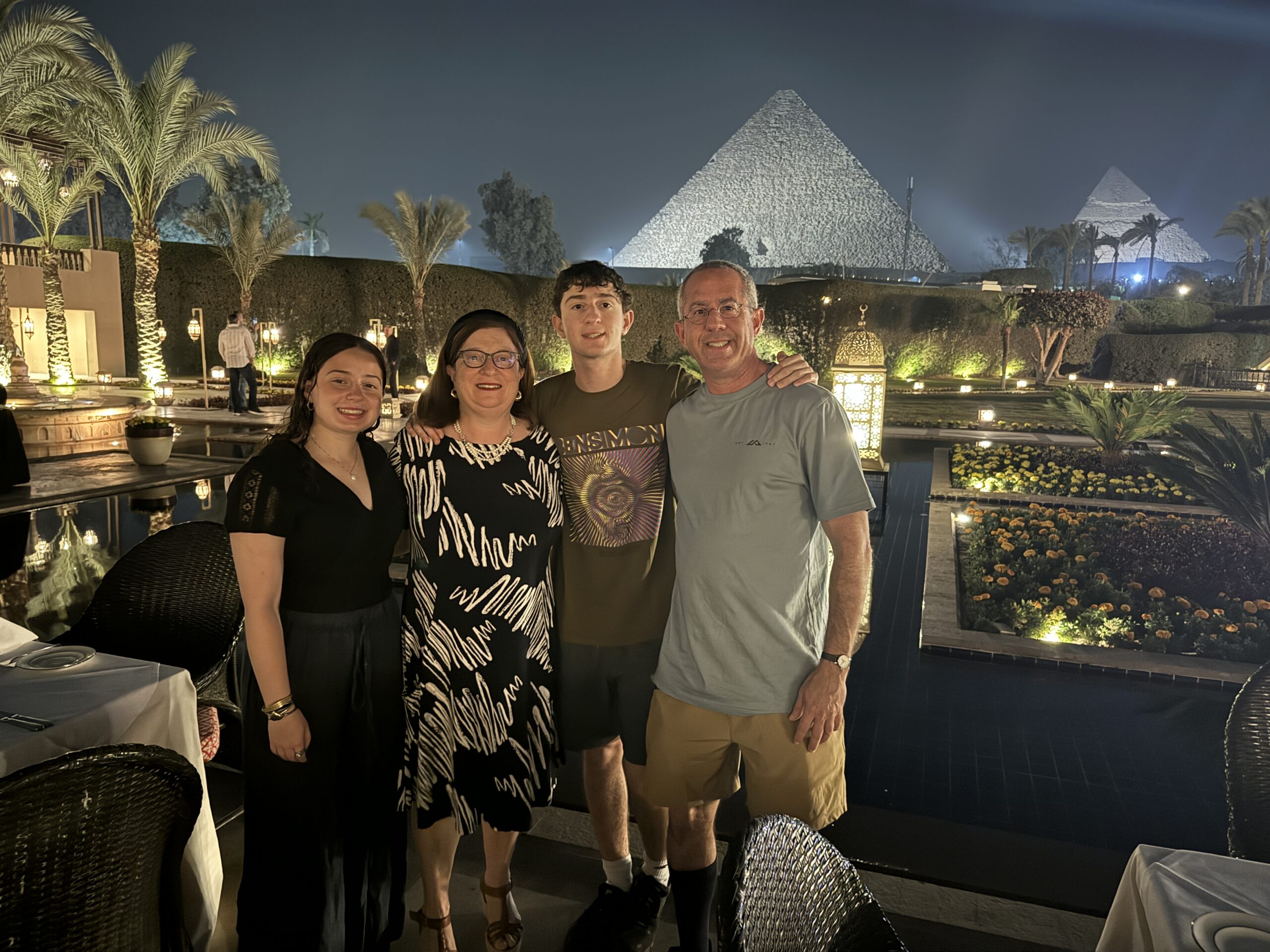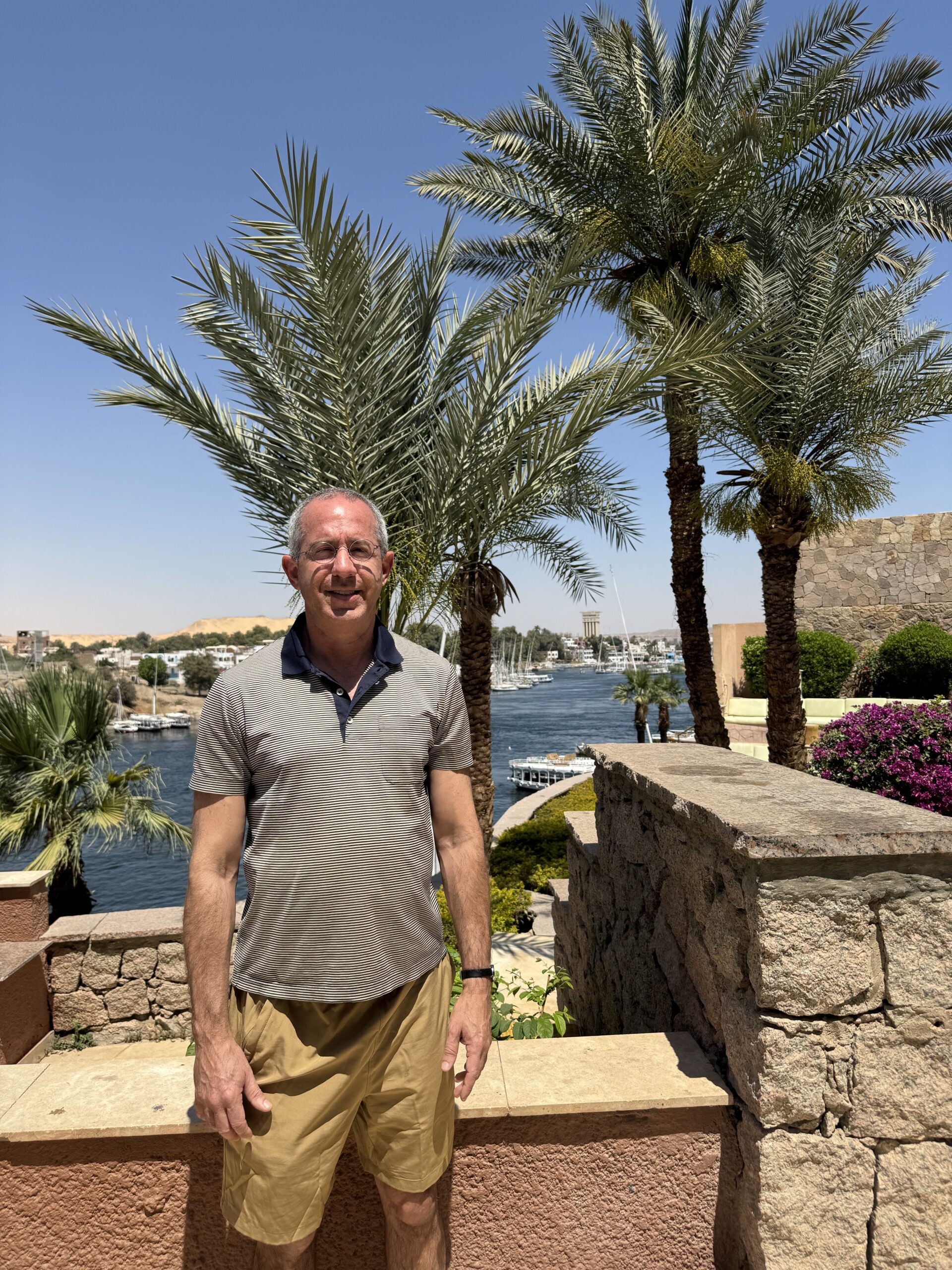Anyone in leadership who seriously thinks about the future of American Jewry grapples with 3 interlocking challenges: how to keep the highest number of them affiliated, informed and active. The clear trend is toward unaffiliation, apathy and evidence of disconnect from communal structures. Traditional means of involving people in the world beyond their households have changed in a universal sense and the hot-button issues that motivated people to think beyond themselves no longer exist. As examples, newspaper readership and top-three television network viewership are down significantly. Anti-semitism and fear of Arab warfare against Israel no longer excite. The Holocaust has become commoditized and charitable giving has shifted toward universal donor-directed causes. The Internet is a vibrant place to be Jewish today, but it is a highly fragmented market, personal to the user and the sense of community is fleeting. Mounting evidence of alienation and depression among those substituting Internet interaction to traditional media is convincing and disturbing.
While we have reached that point in history where creating a Jewish newspaper to reach the masses is longer viable, technology and sociology have converged to make it feasible to create a Jewish TV network that would provide a freely accessible means of interacting Jewishly both on personal, communal and universal levels. Such an instrument can reach the masses at no cost to the user. It can inform, educate, persuade and call to action. Though some will argue that even television has become passe in an Internet age, it is maintained that television is still the best medium to deliver a broad-based message and unify a community of interests. It can also help to create culture and familiarize people to each other across national and ethnic lines. Both of these are necessary to create positive role models and compelling reasons for maintaining Jewish identity into the next generation. A strong theme that guides this study is the desire to use television to bring people closer to each other and to be exposed to different types of people in a positive manner they might otherwise not get to know on their own (ie: Americans & Israelis; Moroccans and Russians)..
What is proposed is a 24 hour a day, 6 day a week television network that will produce and acquire programs that will service the needs of all sectors of the Jewish community, from the unaffiliated to the ultra-orthodox. It will speak to the Jewish world but to no particular locale and will itself be apolitical with an independent voice while hosting programs that provide lively debate and reporting of issues without excessive regard to the interests of any particular person, faction or association. Initially, it will broadcast to an audience in the New York City metropolitan area, home to as many Jews as the State of Israel. In its second stage, the network feed will be available via satellite to whichever cable or DSS system wishes to receive it. Such a network may attract additional customers to cable or DSS systems.
The central assumption of this report is that the cost of production and acquisition of programs can be brought down to an affordable amount, given advances in and the reduced cost of technology and the fact that most of the programming can be taped and prepared at low cost using mainly young professionals in entry-level positions using their efforts at the network as an experience-gaining position. A strong lineup of quality programs should draw devoted segments of viewers on the strength of their content as opposed to their razzle dazzle component with a strong emphasis on in-studio faces and low-budget location prepared pieces. The cost of transmission is too high a variable to be able to be studied here, and such costs may be both uneconomical and physically impossible (ie: if no one is wiling to host such a network on their cable or satellite system). In any event, this study does not propose that such a network can be run at a profit but that it could be run at a low enough level of subsidy to be tolerable, and that the Jewish community would get the benefit of a bargain in subsidizing this form of public television system. Perhaps profit will eventually become a factor, and the tendency of such a network to draw among the most desirable of demographics of any network in existence as well as the desire of opinion-makers of all stripes both in the US and abroad to gain access to such a viewership in real time (which this network would make possible for the first time) should work in its favor.
Programming Content
The following discussion focuses on Monday – Thursday programming. Friday features an abridged schedule with afternoon shutdowns, the exact hour depending on the season. Saturday night has a special schedule. Sunday contains repeats of weekday programs along with an emphasis on acquired programs and some public affairs programs. Space on Sundays would also be set aside for programs produced and perhaps paid for by various interests within the Jewish community that want access to the network (ie: causes, organizations, factions).
The weekday 6:00 – 9:30 bloc would consist of educational and religious programming, including early morning readings and explanations of psalms and works from the mussar movement. An early morning Talmud learning session would be coordinated with the worldwide Daf Yomi rotation. Other programs would cover biblical concepts and stories, folklore and history. A short program “Words of Faith” would follow the BBC model and allow for a rotating pulpit. “Ask the Rabbi (or Rebetzin)” would be an interactive Q&A opportunity.
At 9:30, Uncle Avi and the Mitzvah Gang changes the orientation toward the toddler audience with fun, manners and basic Jewish concepts. Next comes Shvitz, an aerobics and physical exercise program with emphasis on Yiddish and Hebrew speaking by appropriate instructor-hosts. At 10:30 begins the first of 3 programs during the day labeled “Lecture Hall” which are 40 and 55 minute slots dedicated either to the presentation of lectures of serious topics, readings, or coverage of events, drawing from the C-SPAN model. Examples could range from a lecture on Jewish Life in New Orleans during the Civil War, coverage of a session at a recent AIPAC conference, to a reading from a piece of literature, fiction or nonfiction. A 15 minute relay of English-language news from Israel Television would lead to the 2nd Lecture Hall Session followed by a 45 minute Ulpan which would demonstrate a daily commitment to Hebrew language instruction. Following Ulpan would be relay of the evening Hebrew-language newscast from Israel Television with simultaneous English translation. The final hour of this rather segmented and eclectic mix would be foreign language programming directed at either the Russian or Yiddish community on an alternating day basis.
The network reverts to a more mainstream feed at 3pm with Conference Call featuring a moderated discussion among a group of ten people seated round a table in a sort of town meeting without the ruckus of a studio audience. A second version of this might feature a guest moderator who is the focus of questions from those around the table. If this program is broadcast live, there would be opportunity for viewers to interact via e-mail or telephone. Children’s programming follows beginning with a dubbed Israeli version of Sesame Street known as Rehov Sumsum (or some other appropriate program) and a repeat of Uncle Avi for those who didn’t see it earlier or those with West Coast feeds. Next is Fricassee, a program for pre-teens and teens, with two sets of hosts each geared toward the 8-13 and 13-17 age group, on alternating days. This is a high priority program and is explained separately.
The dinner hour includes a cooking program and a crafts program which lead into the 7pm Flagship program with news and features. This is the network’s other high priority program and is explained separately. Following the Flagship program at 8pm is a family hour dedicated to special or acquired programming. The 9pm hour is a nightly rotation of special interest originally produced programming: Singles Scene, Business, People, Ideas. Within this rotation is a mixture of discussion and reporting. The third installment of Lecture Hall begins at 10, followed by a repeat of the morning Daf Yomi lecture and the Folklore and Words of Faith programs. At midnight is a repeat of the Flagship Program. From 1am to 6am is an original program “Night-Shift” where video hosts play records, take phone calls, dispense advice and keep insomniacs company. Hosts would include a rotation of teenagers, students, and members of various communities such as Israeli, Russian, Latin, etc.
The sabbath and holidays present special religious programming opportunities and these would appear in the hours preceding and following these occasions.
Look and Feel
Continuity and an overall look and feel would be provided by trailers promoting various programs, public service announcements, commercial advertisements and/or program sponsor announcements, voiceovers by a permanent announcer narrating program trailers and public service announcements, leading viewers from one program into another and the displaying of headlines and vital information at the top of selected hours during the broadcast day. The intended look and feel of the network is BBC-1 with a mellow flow and limited commercial interruption, that will serve as a type of comforting accessory to keep one company through the day and night. No one’s blood pressure should go up watching the network and content should be suitable for all ages and sensitivities all the time. Vocabulary and content must be welcoming to one who has no Jewish background or who is not Jewish. The main challenge is to provide Jewish content to a Jewish audience without the appearance of kitchiness and preachiness that will have the effect of making most Jews change to another channel. By emulating a state-run entity such as the BBC or PBS instead of having the look and feel of an ethnic or religious channel, it should be possible to navigate this field correctly.
Back to Content: Details Concerning Certain Types of Programs
Following are more detailed descriptions of the leading programs that will require focused resources because they broadcast to the segments of the viewing audience that demand this level of attention: the teen hour and the nightly flagship broadcast.
The teen program is hosted by youths covering teen concerns who tend to go outside the studio and explore. They might visit college campuses and programs in the US and abroad, explore opportunities such as March of the Living, various organizations that exist for young people or that may wish to introduce themselves to young people, and interact with other Jews and experience their situations (ie: Israel-pre-army, scouts, pre-college testing, kibbutz, exchange programs) and engage in interactions that showcase skills such as athletics, fashions, dance trends, computer technology. Also discussion of subjects facing teenagers such as religious and sociological issues and choices. These interactions do not necessarily have to involve only Jews and the benefit of such interchanges can add to the more general efforts at stimulating dialogue and mutual understanding among peoples.
The Flagship program is slated for an hour of prime viewing time with a repeat geared for late watchers in the east and prime time viewers in pacifica. The program opens with a 10 minute newscast with some field reports followed by a weekly rotation of departments that are built around two 12 minute blocks per show, each containing a central feature story. The rest of the program would be filled with short spots highlighting community calendar events, and a soapbox opportunity by various personalities to expound for 3-4 minutes on a subject. Examples of Feature Blocs include The Cutting Edge: Developments in Business, Science and Technology that are being produced in the Jewish World; One People: Visits to Jewish communities somewhere else and a hearing of their views. Other slots include in-depth stories about issues of current interest; exposure to interesting people and their skills; coverage of the next generation and issues concerning them; features that answer questions put to the network by viewers; political roundtable debate; and explanation of Jewish concepts in a more business-like manner than would be found in the religious instructional programming cycle. On Fridays, a feature block would include coverage of some sort of religious issue, along with a short sermon appropriate to the sabbath and a musical presentation. The Flagship program on Sunday evenings would be limited to the 10 minute newscast.
Here is a sample list of features that might make up a week’s worth of such a program: Yugoslavia’s Jews and their Unique Position as Intermediaries Amid Civil War; Teenage Prep Schools for Aspiring Israeli Army Commandos; Town Meeting: The Role of An American Jewish Lobby; Focus Group of Germans Watching Schindler’s List; The Explosion of New Jewish-Interest Cinema in Europe and the East Bloc; Living Wills Amid Jewish and Civil Law; The Cutting Edge: Japanese and Korean R&D Investment in Israeli Hi-Tech Companies.
On Saturday evenings, Melave Malka would be a family-oriented celebration of the sabbath and offer entertainment suitable to a religious audience as well as a general audience that appreciates music, literature and discussion. This program would be presented in a short form immediately with the start of programming after the sabbath and then in its intended form on Saturday nights. Programs can involve various families from various places, on the same or different programs.
Before leaving the topic of content, a word about acquired and special programs, just to give an idea of the breadth of possibilities for this channel. Each year the Limmud conference in Britain offers over 1,000 lectures during a 5 day period on almost every conceivable topic. Video tapes of these lectures could fill Lecture Hall slots for the entire year alone. Then of course there are CAJE conferences and all sorts of authorities here and abroad who would enjoy the opportunity of taping lectures to be broadcast to Jewish audiences. Examples of programs that can be imported are dubbed teen programs from Israel, Jewish Film Festival selections, documentaries from production companies, the cultural, sports and religious programming libraries of Israeli Television (ie: Israeli Philharmonic and cantorial concerts, football and basketball), coverage of Yeshiva sports leagues and their regional and national tournaments, and original programs that fill gaps (ie: visit to russia to document current situation and attitudes and activities taking place in the country such as YUSSR and JDC). Then of course there are films, concerts, book readings, plays and Jewish festivals that aggregate talent, invite coverage and that are constantly occurring throughout the world.
Sabbath and Holiday Shutdowns
The network would cease broadcasting on Fridays between 4pm and 7pm, depending on the season and always at 4pm on a holiday eve. Studios would cease production at 4pm on Fridays and would open only on Saturday and Sunday nights for Night Shift (live) and the 7pm newscast on Sunday. On special occasions, the Sunday morning political affairs programs might be retaped or broadcast live if the Friday versions are out of date by air time. Saturday nights and post-holidays, programming would begin between 7pm and 10pm depending on the season. During shutdown, one option might be continuous video with music in the background or live relay of Israel Radio in the background. Another option might be to lease the channel to some other broadcaster in order to create income to subsidize the rest of the week. It is estimated that the network would lose an additional 10-13 days per year of broadcasts due to holidays.
Revenue
Possible sources of revenue include an Internet site geared toward commerce which receives percentage of revenues from referrals to third party vendors, royalties from merchandising products over the air or elsewhere, royalties from the licensing of characters created by programs associated with the network (ie: characters arising out of children’s programming produced by the network); sponsorships of program series (ie: daf yomi) or special programs or parts of programs that focus on particular items of interest (ie: sefardi history). It is also possible that viewers will become members as they do with other forms of public television and that such contributions can be induced via incentive marketing programs. Commercial advertisers might include retailers and service enterprises, causes and politicians seeking Jewish support or recognition, industrial and commercial entities seeking goodwill, and companies seeking investment. Finally, it is possible that such a network would be made available to viewers on a subscription basis over certain cable and/or satellite systems. All told, it is estimated that perhaps $1.5 million per year could be raised through these means, and that another $1-2 million would be needed from direct philanthropy or allocation from communal organizations to cover administrative and programming expenses on a yearly basis.
Expenses
Attached are sample budgets with allocation models, as well as sample broadcast schedules and allocation models as to the production of the relevant programs. Also attached are some projections with regard to revenues. As said above, the main cost which is airtime, cannot be determined with any amount of certitude. The value of a dedicated channel to Time Warner in Manhattan could well be $50 million a year and there is fierce competition for space by deep-pocketed corporate customers; on the other hand, it might be offered for much less or in return for subscription or advertising revenue if Time Warner saw either a benefit to having such a channel exist or were pressured into releasing space on its system for such a channel. There are other ethnic communities that might want such a network as well but the Jewish community need not fear being the first or the most persuasive. The cost of providing satellite feed for the purpose of making this network’s programming available beyond New York City is not known but is estimated to be high enough that it is not under consideration for the initial stage of this project. Certainly the cost of providing a network feed via Internet would be low enough to be affordable. It might well be that air time could be procured at low or no cost from a cable system in a secondary city such as Miami but it needs to be measured against the cost and effort of producing programming for a limited audience. Ultimately, if this study is correct, the cost of such a project can be made tolerable and suitable product can be delivered to at least the New York metropolitan Jewish community; the question is whether or not the benefit is worth the cost.
This survey contends that the amount of funds directed to this project would be an efficient and relatively inexpensive investment of resources toward promoting communal objectives toward a mass audience, inculcating communal values and a positive Jewish identity upon the next generation, educating sectors of the community according to their various needs who will not leave their homes to receive such instruction, and making various sectors of the community feel that their interests are being served and heard. This project will make the masses of Jews feel closer, part of something bigger, and more conscious of issues and concerns on a daily basis. As yet, no project has attempted or achieved such results, but the time might now be ripe — and the need compelling enough — to try.
Click here to go to Budgets, Sample Schedules, and more gory details.





